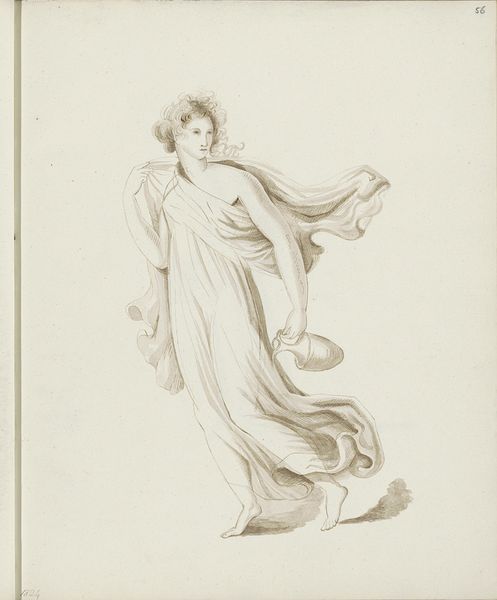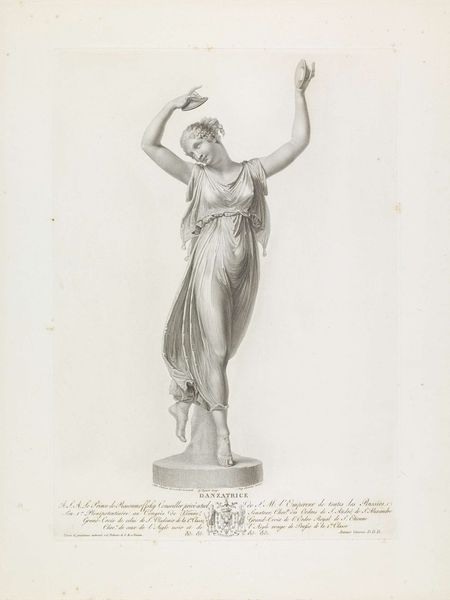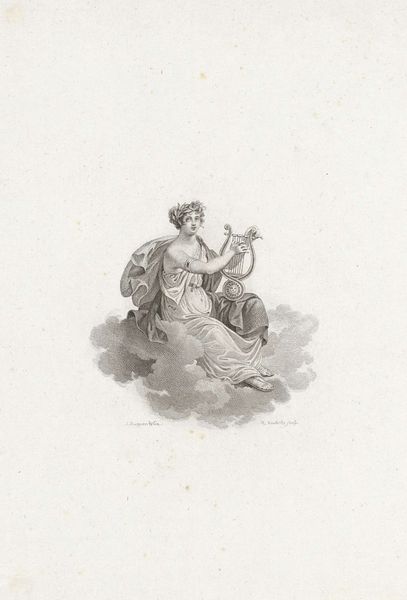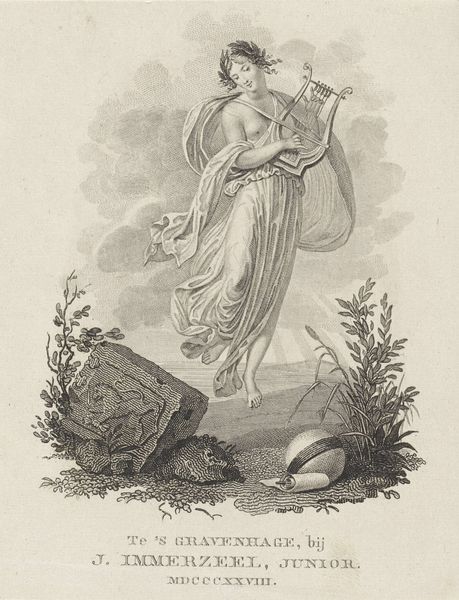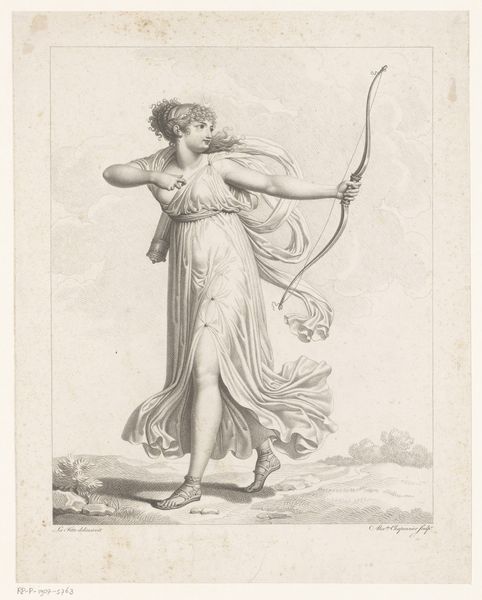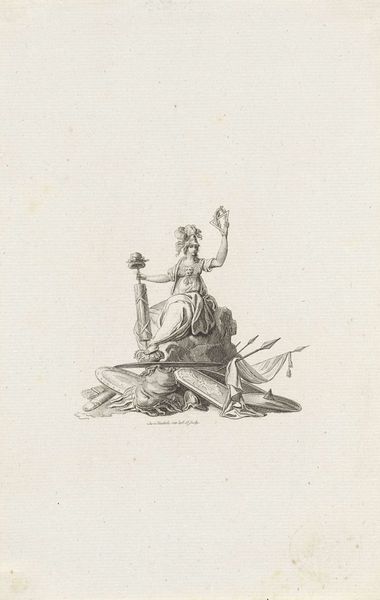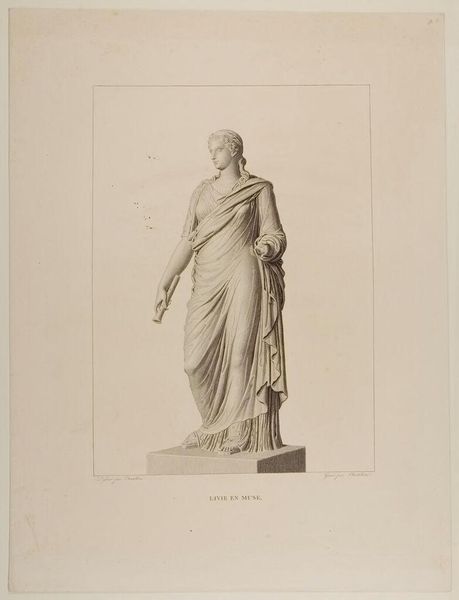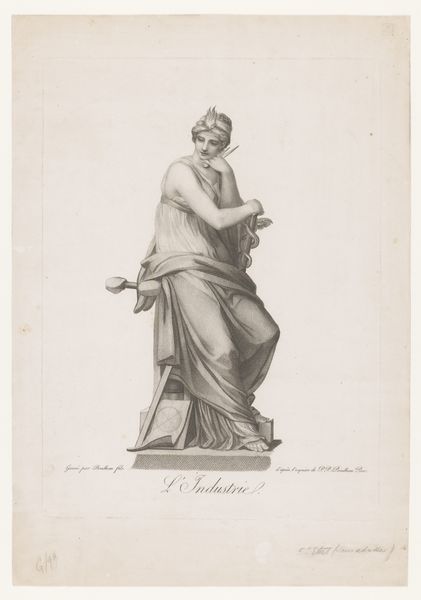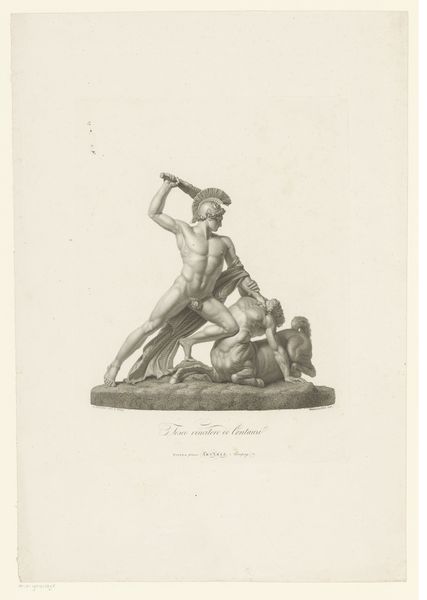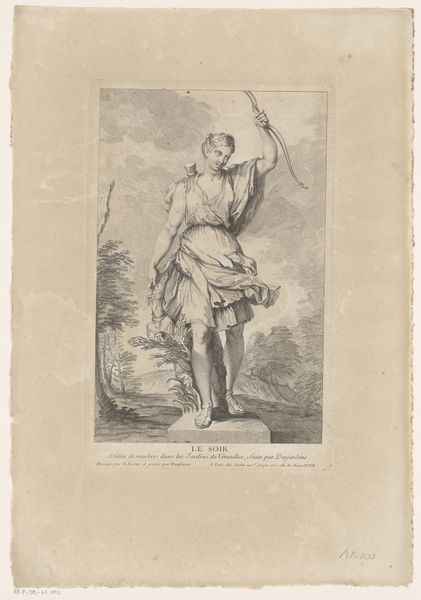
drawing, print, pencil, engraving
#
pencil drawn
#
drawing
#
neoclacissism
#
allegory
# print
#
pencil sketch
#
landscape
#
figuration
#
pencil drawing
#
pencil
#
pencil work
#
academic-art
#
engraving
Dimensions: height 465 mm, width 334 mm
Copyright: Rijks Museum: Open Domain
Angelo Bertini made this engraving of a sculpture of the Greek goddess Hebe in Italy in the early nineteenth century. Hebe, the daughter of Zeus and Hera, was the cupbearer to the gods, responsible for serving ambrosia and nectar, the drinks of immortality. In Bertini’s time, images of Greek and Roman deities and heroes were very popular because they represented the values of classical civilization. They stood for the ideal of beauty, which had political meanings. These images often served as propaganda. Hebe, in particular, embodied youth and vigor, so she was often used to symbolize the hope for renewal after a time of conflict, like the Napoleonic wars. The rise of the museum as a public institution shaped people’s understanding of art and culture. Art historians use resources like period publications, museum records, and personal correspondence to better understand the context in which artworks like these were made and received.
Comments
No comments
Be the first to comment and join the conversation on the ultimate creative platform.

